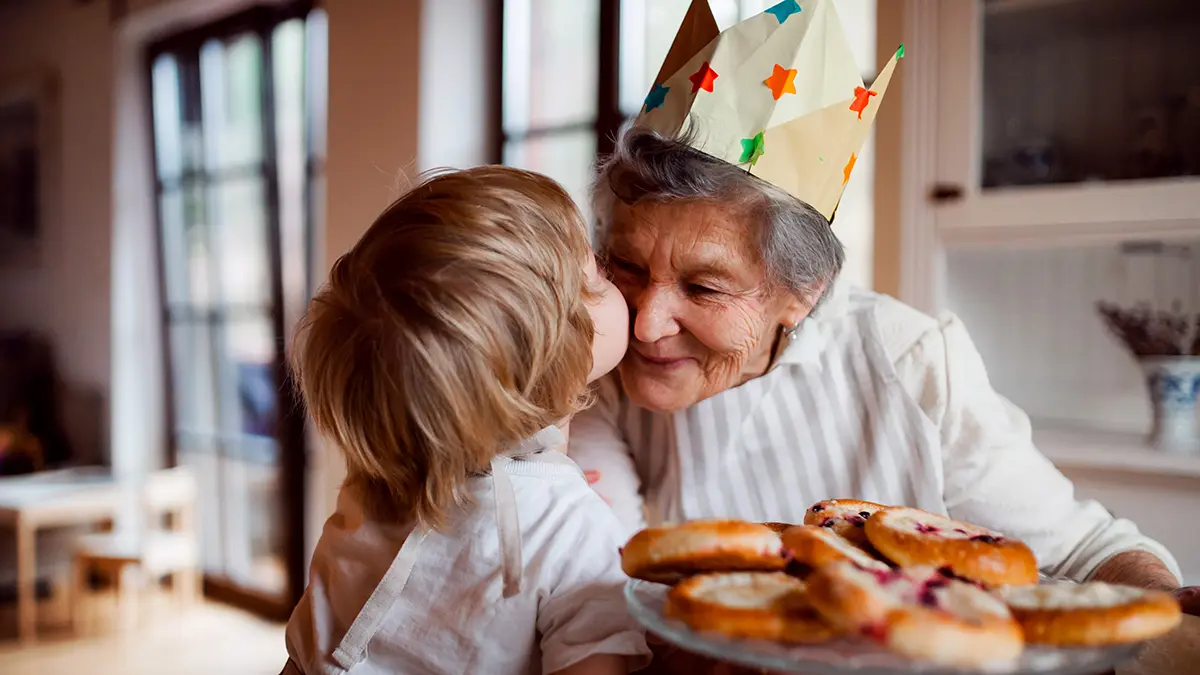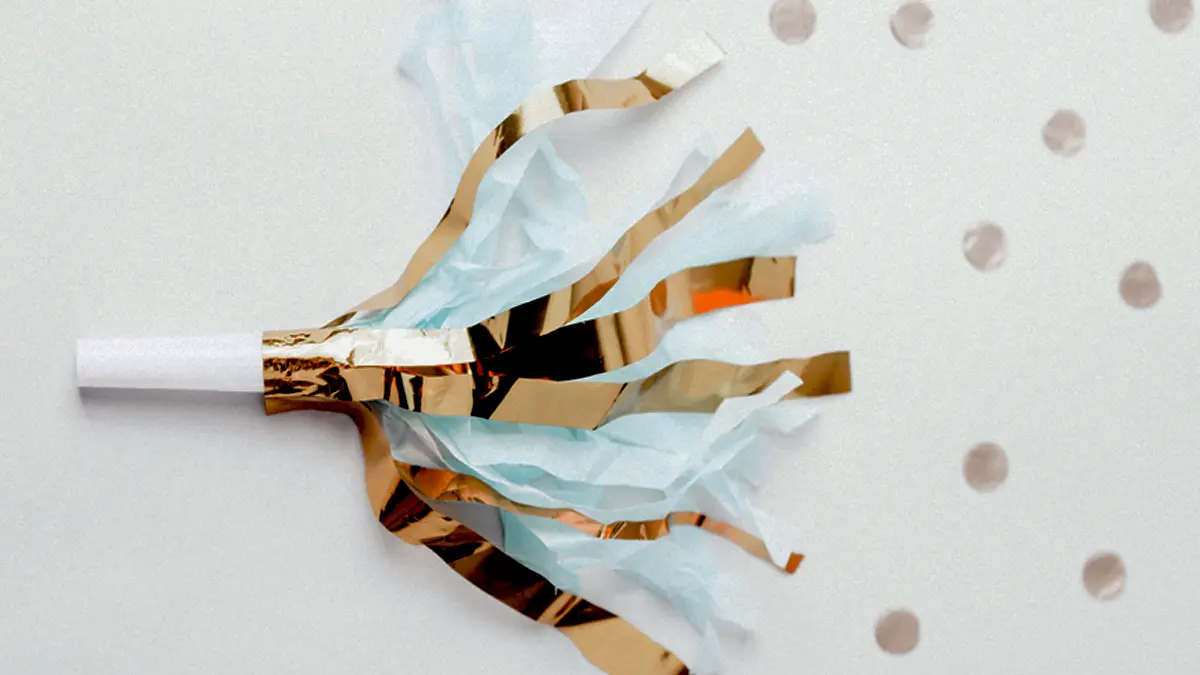Birthday Traditions: Why We Wear Pointy Hats and Use Party Horns
You know it's time for a birthday party when you see people wearing pointy hats and blowing party horns.
Jun 07, 2021
You know it's time for a birthday party when you see people wearing pointy hats and blowing party horns. But have you ever wondered where these traditions come from?
As with many modern-day customs, we can trace the origin of pointy hats and noisemakers back to ancient times. Once puzzled by the purpose of these objects, art historians now believe ancient Egyptians wore cone-shaped hats as a festive form of dress at special occasions, like banquets.
In 2019, archaeologists excavating an ancient grave site unearthed two beeswax cones that match those seen in wall paintings, like this one at the Walters Art Museum in Baltimore. An international team of university scientists published details of two cones found in fragments at Akhenaten, the ancient Egyptian city built by the Pharaoh Akhenaten in the 14th century BC.

These physical findings combined with the artwork previously found indicate that many members of Egyptian society wore cone-shaped hats at celebrations. One study suggests these hats were symbols meant to enhance the rebirth of the deceased in the afterlife.
In some parts of the world, including Great Britain, birthday party hats — especially when worn by the guest of honor — are usually in the shape of a royal crown. However, in the U.S., the cone-shaped dunce cap — worn as a form of punishment by misbehaving schoolchildren in the 19th and early 20th centuries — may have been the inspiration.
The dunce cap gets its name from John Duns Scotus, a 14th-century Scottish priest and philosopher. He believed that wearing a pointed hat would somehow funnel knowledge into the brain. Cone-shaped hats become popular among his followers — called Dunsmen — and eventually became associated with wise men and wizards.
Today, a typical birthday party hat is made of thin cardboard, usually printed with colorful designs on the outside, that is rolled and fastened into a cone shape. A strip of thin elastic extends from one edge of the open end of the cone to the other, serving as a chin strap.
Party hats in all shapes
In addition to the standard conical design, today's party hats come in many different materials, shapes, and sizes, depending on the party theme and the guest of honor's tastes.
“Party hats have much more variety today," says Shay Bunson, owner of Party Perfection Oregon. “There are lots of styles, colors, poms, streamers, and 3D pop outs." She says at most of the parties her company plans, the guest of honor wears a unique hat, such as a crown or tiara or a larger version of what everyone else is wearing.

"Little kids love wearing hats," says Seri Kertzner, owner of Little Miss Party, an event planning company in New York City. She says that firefighter hats, pirate hats, construction helmets, and animal-themed hats are especially popular with little ones.
But what about pointy party hats at adult birthday parties? These may spend more time on the table as decorations than on guests' heads, according to our experts. Unless it's a milestone birthday, Seri says, adults tend to sport a pointy hat for a quick photo and then take it off.
There are exceptions, however. For example, Seri's company recently made some custom-designed party hats for a 26th birthday party as part of its "party in a box" online service.
Why do we use party horns?
Another long-standing birthday tradition is the party horn. The modern version of this party accessory features a plastic mouthpiece attached to a thin coiled strip of paper, metal, or plastic that unrolls and makes a toot or horn-like noise when you blow it.

One theory about the origin of these noisemakers is that superstitious ancient revelers believed loud noises chased away evil spirits. In other words, if you blew horns or whistles, or even banged on pots and pans, you could protect the birthday boy or girl over the course of the next year. The same theory applies to New Year's Eve noisemakers, according to historians.
In addition to blowout horns, birthday noisemakers can include whistles, kazoos, clappers, and poppers. Shay says that clappers are the most common noisemakers at the kids' birthday parties she plans. She also has seen an increase in the popularity of confetti poppers, which use the force of compressed air to create a popping sound and release confetti or streamers.
Seri says her company usually doesn't suggest blow horns for kids' parties. "They make annoying noise, and the kids get obsessed with them," she says. "I do love noisemakers for New Year's, though. We always use them in our own and client celebrations at that time of year."
And just in case you were wondering, the world record for most individuals blowing party horns at one time was set in Tokyo in 2009. According to the Guinness Book of World Records, 6,961 members of the audience at a concert by Japanese pop singer Nana Mizuki successfully blew party horns simultaneously for 10 seconds. Nana's fan club reportedly made three previous attempts to set the record.
What's the longest single toot from a party horn? It was a whopping 12.51 seconds, also set in 2009. And as parents just learning of those records, we're now thinking those confetti poppers don't sound like such a bad idea after all!










